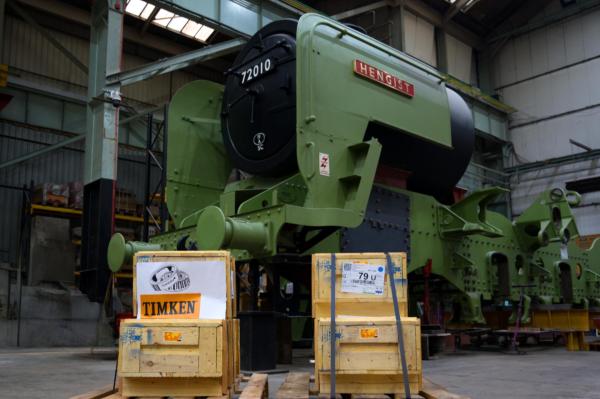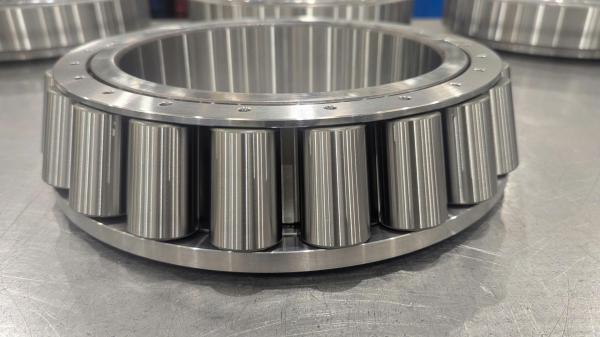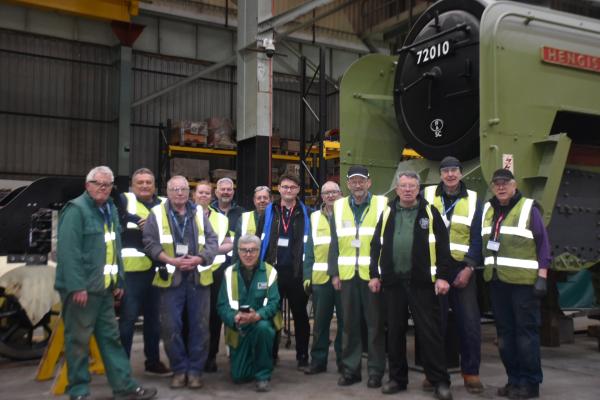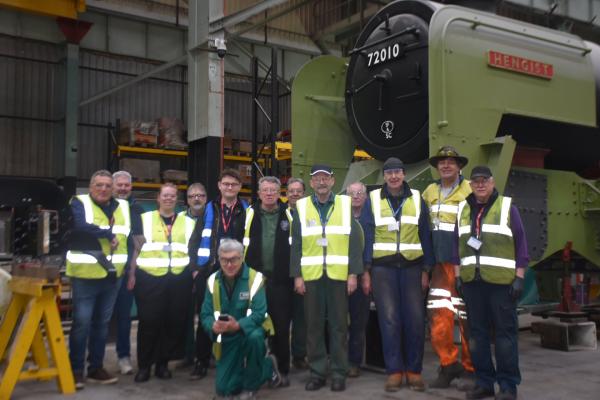Latest News
Current news items are listed below. If the Acrobat icon is shown, then click on the icon to read the attachment. If an image is shown, you can click it for a full size image. You can find old news items in the News Archive.
| Youtube Video | |
| 26/12/2025 | |
| If you haven't seen our Youtube video yet then follow this link. We hope you enjoy it! | |
| Bearings for Coupled Wheels Arrive at CTL Seal | |
| 23/12/2025 | |
 |
|
| Key Milestone Reached as Roller Bearings Arrive for Hengist Locomotive Six roller bearings required for the coupled wheels of the new-build BR Standard Class 6 locomotive No. 72010 Hengist have been successfully delivered to its construction base at CTL, Sheffield. The bearings were supplied by Timken UK Ltd, based in Dudley, and represent the first delivery of three major orders placed for the locomotive’s coupled wheelsets. The tyres, are scheduled for delivery in January 2026, and the axles, due in April 2026. Valued at £44,000, the roller bearings were manufactured by Timken UK Ltd at their purpose-built facility in Dudley, West Midlands. These three orders mark a significant milestone in the acquisition of key components for Hengist’s wheelsets. The next major procurement will be the castings for the cannon boxes, which are planned for spring 2026. Commenting on the delivery, Andy England, Chairman of the Hengist Project, said: "The arrival of these bearings represents another important step forward. They will be fitted to the cast steel coupled wheels generously donated by Sir Andrew Cook, owner of William Cook Cast Products. The tyres and axles are due for delivery in January and April 2026 respectively. “The combined cost of the bearings, tyres, and axles totals £88,000, which would not have been possible without the continued commitment and support of our members. Our focus in 2026 will be on ordering the remaining components for the wheelsets, enabling us to wheel the engine in 2027. Achieving this goal will rely on continued donations from everyone who wishes to see Hengist move closer to completion.” Commenting on the delivery Gavin Bagley from Timken’s Dudley production facility said: "This is the 3rd such Steam Locomotive roller bearing wheelset project that we have delivered in recent years. We had previously manufactured the coupled wheel roller bearings for the Tornado & Duke of Gloucester locomotives. Timken UK is in a unique position to support the UK Heritage Rail sector for these projects, with our ability to manufacture such legacy bearings according to their original designs but using the latest CNC production technology. We have the capability to manufacture most designs of cylindrical roller & ball bearings & can supply custom engineered bearings for new installations or obsolete bearings for older equipment, often with short lead-times." |
|
| Coupled Wheel Bearings | |
| 23/12/2025 | |
 |
|
| Whereas the bogie axle cannon boxes use Timken bearings that are available "off the shelf", the coupled wheel bearings are made to special order. We have purchased 6 taper roller bearings, 2 for each axlebox. Each bearing has an outside diameter of 377.8 mm (14.875") to fit on an axle diameter of 235mm (9.25"). The bearings will remain in their packing cases until we are ready to start wheelset assembly. | |
| Xmas Greetings! | |
| 22/12/2025 | |
 |
|
| Christmas greetings to all our supporters from the Monday gang! It's been an eventful year with the highlight being able to display our stand at the Greatest Gathering in Derby. Next year our focus will be on building the coupled wheelsets. Major components have started to arrive on site and more will be following shortly. Onwards and upwards in 2026! | |
| Xmas Greetings! (2) | |
| 22/12/2025 | |
 |
|
| And because its impossible to get 100% of the Monday gang to be in the same place at the same time, this is a slightly different Monday gang group photo! | |

